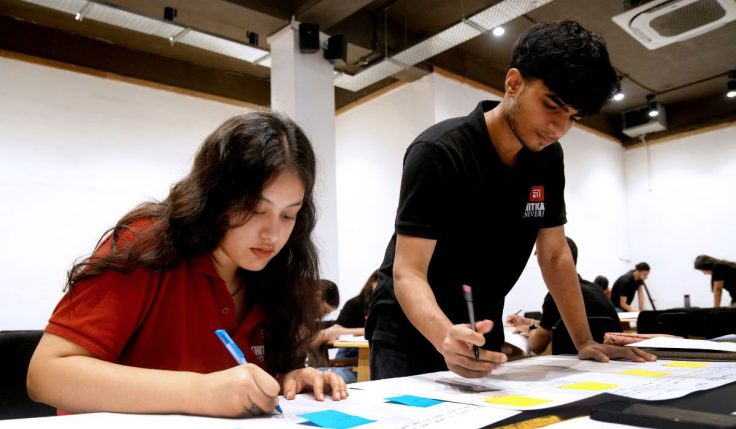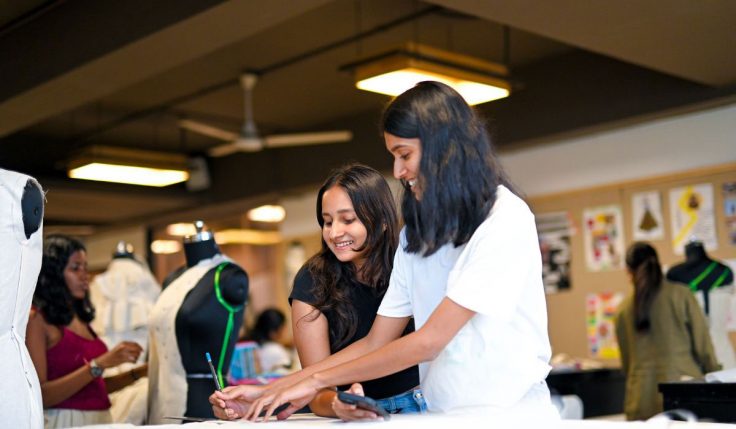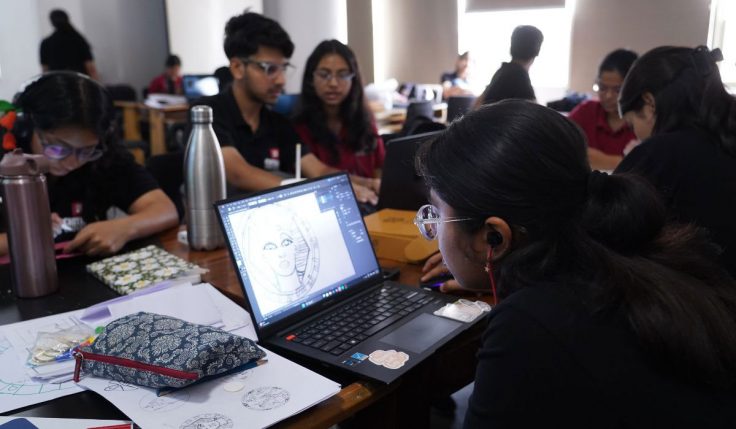The design, development, and manufacture of apparel and accessories are all included in the dynamic and artistic realm of fashion design. In the current digital era, designers are using programs like Adobe Illustrator more and more to expedite their work and artistically and precisely realize their ideas. Adobe Illustrator is a priceless tool for young fashion designers who want to polish their skills since it provides a full range of tools that enable them to create complex fashion illustrations, technical drawings, and patterns.
To embark on your journey of learning fashion design using Adobe Illustrator, consider these 10 essential steps:
Grasp the Fundamentals of Fashion Design: Before delving into Adobe Illustrator, familiarize yourself with the core principles of fashion design, including garment construction, fabric selection, and trend analysis.
Get Acquainted with Adobe Illustrator: If you’re new to the software, take the time to explore Adobe Illustrator’s interface and basic functionalities. Adobe offers tutorials and resources to help you navigate the software efficiently.
Master Fashion Illustration Techniques: Fashion illustrations are the cornerstone of fashion design. Learn how to use Adobe Illustrator to create detailed and expressive fashion sketches, capturing the essence of your design concepts.
Dive into Color Theory: Understanding color theory is crucial for creating captivating designs. Use Adobe Illustrator’s color tools to experiment with different color palettes and apply them harmoniously to your designs.
Hone Your Skills with the Pen Tool: The Pen tool is indispensable for creating precise lines and shapes in Adobe Illustrator. Practice using the Pen tool to outline your designs and add intricate details.
Create Technical Drawings: Technical drawings provide a detailed blueprint of a garment’s construction. Learn how to use Adobe Illustrator to create accurate technical drawings, including measurements and construction details.
Experiment with Patterns and Textures: Adobe Illustrator allows you to create custom patterns and textures to enhance your designs. Explore different pattern-making techniques and apply them creatively to your illustrations.
Explore Brushes and Effects: Adobe Illustrator offers a variety of brushes and effects that can add depth and dimension to your designs. Experiment with different brushes and effects to achieve the desired visual impact.
Learn to Create Flats: Flats are essential for showcasing the structure and details of a garment. Use Adobe Illustrator to create precise flats that accurately represent your design from all angles.
Practice Consistently: Like any skill, mastering fashion design using Adobe Illustrator requires practice. Dedicate time to refine your skills and experiment with new techniques to develop your unique style.
Prospective fashion designers can considerably enhance their skills by enrolling in a Bachelor of Design (B.Des) degree in fashion design, alongside their study of Adobe Illustrator. These courses include comprehensive coverage of several fashion design themes, such as textiles, garment structure, design principles, and fashion history. Additionally, students have the opportunity to acquire knowledge in the business dimension of the fashion industry, encompassing areas such as branding, marketing, and merchandising.
An essential benefit of enrolling in a B.Des program in Fashion Design is the valuable hands-on experience it offers. Students generally have the opportunity to utilize modern design studios and technologies, allowing them to explore various materials, patterns, and approaches. In addition, they have the opportunity to engage in collaborations with professionals in the field, participate in practical projects, and present their creations at fashion shows and exhibitions.
The B.Des programs in fashion design offer significant benefits as they emphasize the utilization of tools such as Adobe Illustrator to boost creative skills. These programs instruct students on utilizing digital technologies to produce technical drawings, patterns, and fashion illustrations. This information is vital since, in the current digital age, technology has a significant impact on the fashion design process.
Overall, a Bachelor of Design in Fashion Design degree can equip ambitious designers with the necessary expertise, understanding, and practical exposure required to excel in the highly competitive industry. Graduates possess the necessary skills and knowledge to pursue professions in many roles within the fashion business, including as designers, merchandisers, stylists, and other related positions.
The objective of Chitkara University’s four-year Bachelor of Design (B.Des) program in Fashion Design is to provide students with the requisite knowledge and skills to thrive in the dynamic fashion business. The main objective of the curriculum is to foster creativity, technical proficiency, and industry knowledge by combining classroom instruction with hands-on application.
The B.Des in Fashion Design degree offered by Chitkara Design School encompasses a diverse array of topics, including sewing skills, draping, patternmaking, textiles and crafts, fashion illustrations, fashion CAD (2D & 3D), and the historical aspects of fashion and civilizations. Our all-encompassing strategy will equip students with a solid grounding in both conventional and contemporary elements of fashion design.
An important feature that makes the program attractive is its focus on studio practice, where students receive instruction from designers and artists who are knowledgeable in both business and studio work. Through this practical approach, students have the opportunity to refine their skills, broaden their understanding of design, and develop expertise in research, teamwork, innovation, and trial and error.
Also, read this blog post: Enhancing Fashion Design with Adobe Illustrator & Photoshop
During the semester, students have the opportunity to engage in internships with prominent fashion firms, collaborate on projects that are specifically tailored to the industry, and present their work at fashion shows and exhibitions. As a result of this hands-on training, students are more equipped for very profitable professions in fashion design. Additionally, it enables the cultivation of their professional portfolios and establishment of links with industry specialists.
Program graduates have several work opportunities in the fashion sector, including roles such as buyers, merchandisers, creative directors, trend forecast analysts, fashion journalists, researchers, consultants, costume designers, wardrobe managers, illustrators, and fashion CAD designers. They have the ability to perform tasks such as product design, assisting, styling, or entrepreneurship.






